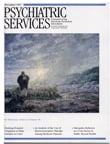Being Positive: The Lives of Men and Women With HIV
Being Positive: The Lives of Men and Women With HIV grew out of Dr. Robert Klitzman's experience that "the gap between academic research and the complexity of patient's lives became increasingly and painfully clear to me at professional conferences." In the area of HIV, the author contends that "how individuals put together their lives, struggled and survived outside the hospital, and found meaning in their lives were essentially ignored by medicine and psychiatry."
Drawing on his background as professor of clinical psychiatry at Columbia University and his earlier field training in medical anthropology, Dr. Klitzman sets out to add flesh and blood to the often dry academic areas of medical research, by giving voice, through carefully conducted interviews, to the lives of 54 people infected with HIV. They represent a diverse sample of age, race, gender, socioeconomic standing, sexual orientation, and mode of HIV transmission. In addition, he places our culture's attempts to come to terms with this uncontrolled epidemic against a backdrop of historical cultural responses to various plagues and disasters.
What results from these complementary endeavors is a work that not only provides richly detailed clinical insights—and, more important, deeply felt human ones—but that also asks existential questions both about how we construct meaning in our lives and about how HIV affects the life of every reader, not just those it has infected.
The book immediately and compellingly engages the reader with an elaboration of the multidimensional losses that occur after someone receives a positive test result. Especially moving is Klitzman's explication, using people's own words, of the various ways, both blatant and subtle, that they were stigmatized and often rejected based on their seropositive status.
The main body of the work is an elaboration of six patterns of adaptation and response to being HIV positive that the author discerned through his interviews. These six patterns represent individuals' attempts to recreate meaning for lives that had been redefined by this currently incurable disease.
The first pattern of behavior is immersion into what Klitzman calls HIV-Land, an alternative universe that is an amalgam of AIDS-dedicated support, educational, and political groups. Its native tongue is the detailed and sophisticated vocabulary surrounding HIV-related diagnostic testing, medications, opportunistic infections, and the like. HIV-Land creates a community in which individuals can begin to make sense of their infection and re-empower themselves.
The second pattern, discussed at length, is spirituality, through which people often seek atonement or forgiveness from their Higher Power for the behaviors that allowed them to become infected. Identification with a Higher Power also helps enable a sense of symbolic transcendence over their mortality in the face of a highly uncertain future. Work and volunteerism constitutes the third behavioral pattern, affording people the opportunity for continued contribution and competence in the face of profound losses. It also is a way of "acting constructively against the virus." The fourth pattern, of profound importance to many, is a reconnection with their families, or at least an attempt to do so, after the diagnosis has been made. Many have been estranged due to their addictions or sexual orientation.
The final two patterns the author saw are varying degrees of minimization or denial of the nature and implications of HIV and the use or abuse of substances to attempt to escape the pain and stress of living with HIV. Most individuals demonstrate their own admixture of these response patterns, and Klitzman points out the strengths and pitfalls of each of them.
People's capacity to cope in the face of possible annihilation impressed Klitzman. "I had not expected the depth of anguish or the heights of wisdom and insight they achieve—the troubles they encountered in their lives but are now able to confront and discuss."
This is a very valuable book on multiple levels. For the clinician, it provides an in-depth and at times almost painfully candid look into the flesh-and-blood experiences of people living with HIV. It gives us an opportunity to privately drop our well-constructed professional defenses, to feel people's pain, and to be energized by their collective resiliency. Finally, it invites us to look at our efforts to make life meaningful as we confront our own inevitable mortality.
Mr. Martin is affiliated with the Rose Hawthorne Lathrop Home in Fall River, Massachusetts.



